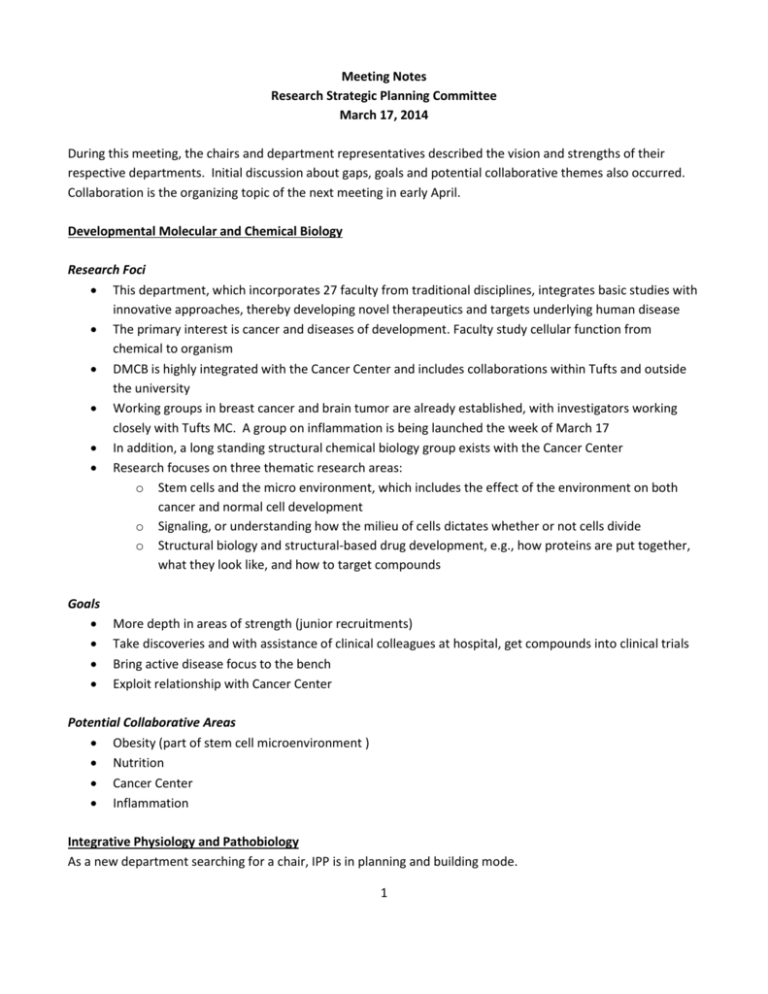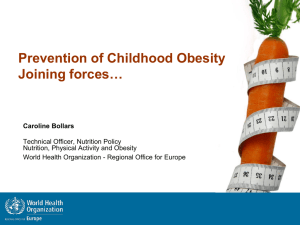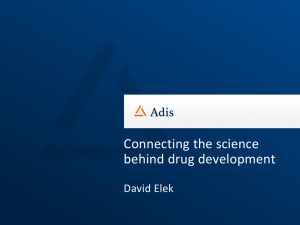March 26, 2014 - Tufts University School of Medicine
advertisement

Meeting Notes Research Strategic Planning Committee March 17, 2014 During this meeting, the chairs and department representatives described the vision and strengths of their respective departments. Initial discussion about gaps, goals and potential collaborative themes also occurred. Collaboration is the organizing topic of the next meeting in early April. Developmental Molecular and Chemical Biology Research Foci This department, which incorporates 27 faculty from traditional disciplines, integrates basic studies with innovative approaches, thereby developing novel therapeutics and targets underlying human disease The primary interest is cancer and diseases of development. Faculty study cellular function from chemical to organism DMCB is highly integrated with the Cancer Center and includes collaborations within Tufts and outside the university Working groups in breast cancer and brain tumor are already established, with investigators working closely with Tufts MC. A group on inflammation is being launched the week of March 17 In addition, a long standing structural chemical biology group exists with the Cancer Center Research focuses on three thematic research areas: o Stem cells and the micro environment, which includes the effect of the environment on both cancer and normal cell development o Signaling, or understanding how the milieu of cells dictates whether or not cells divide o Structural biology and structural-based drug development, e.g., how proteins are put together, what they look like, and how to target compounds Goals More depth in areas of strength (junior recruitments) Take discoveries and with assistance of clinical colleagues at hospital, get compounds into clinical trials Bring active disease focus to the bench Exploit relationship with Cancer Center Potential Collaborative Areas Obesity (part of stem cell microenvironment ) Nutrition Cancer Center Inflammation Integrative Physiology and Pathobiology As a new department searching for a chair, IPP is in planning and building mode. 1 Research Foci Unifying theme is chronic disease with underlying inflammation Forming small groups with critical mass of people in several areas – inflammatory and autoimmune diseases plus obesity. 12 PIs have obesity as secondary theme. Obesity group has grown and possible collaborations includes faculty from all former departments Sjogren syndrome, lupus and other autoimmune diseases could be possible area of growth because of funding possibilities and faculty interest; group slower to come together Gaps Not critical mass in any area, such as arthritis, allergy, or asthma, which makes it more difficult for faculty to coalesce into groups Potential Collaborative Areas Cross talk with Neuroscience, PHCM, HNRCA, Friedman and potentially Cummings Some cross talk beginning around microbiota and inflammation Starting to organize meetings with TMC, where there should be stronger connections Faculty have not fully explored are connections with PHCM and other basic science departments Public Health and Community Medicine PHCM has existed for some time but with different names. Public health research is generally outcome or exposure focused; at this point, PHCM is more focused on the exposure side. Research Foci Department has very diverse faculty interests but depth in only a few areas Organized into several groups with the strongest being the Nutrition Infection unit, which works on HIV primarily and infectious disease A growing area is environmental health including inflammatory markers Other research areas include health communication and new technologies for preventive health delivery, tools in nutrition assessment, Asian health in Chinatown and some Asian countries. Note that global health doesn't really make sense as a theme as all research covers both domestic and global populations Goals Build strength in big data Expand focus in Nutrition/Infection Unit to encompass both communicable and non-communicable disease Potential Collaborative Areas One Health promising with Cummings 2 Outcome related developmental issues, such as pre-term infants and maternal obesity could overlap with neuroscientists and perhaps others On the exposure side, inflammatory markers could cross talk with IPP and DMCB Neuroscience Research Foci Build on existing strengths in epilepsy, autism, obesity, and neurodegeneration Lot of overlap within the department across these focus areas Interested in strengthening these areas through facilitating collaborations, particularly across departments Potential Collaborative Areas Obesity isn't deep but great area for cross talk Gut brain interactions Neuro-inflammation Faculty are very interested in IPS cell technology and bioinformatics; little expertise now exists Clinical interactions occur individually but since the lack of a clinical epilepsy center is a gap Interactions with biotech a strength General Discussion: Collaboration with Tufts Medical Center Collaboration is made more difficult because Tufts MC is siloed into institutes and research is connected to product lines Connections with Floating are minimal; Diana Bianchi’s Maternal Infant Research Institute is very small in terms of the funded research footprint. No connection is in place with cardiology Best collaborations are with MORI Very unclear at the moment where research interests at Tufts MC will be in six months; may shift from wet to more emphasis on dry research and become even more aligned with product lines Olaf and Phil Hinds will represent Tufts MC to the extent possible Phil Hinds will keep Dick Karas up to date General Discussion: Potential Themes and Future Collaborations Microbiome – not much depth in any one department but lots of interest. MBM has been having discussions with HNRCA on microbiome; IPP may want to join these meetings. Potential relationship with DMCB since microbiome is associated with some cancers Nosocomial infection good interaction with cancer and HIV Food and water safety good ties with PHCM 3 HIV: MBM and PHCM Cancer with focus on diseases affecting Asian populations, e.g., breast cancer Obesity HNRCA is an underutilized asset No strength here in metabolism; cross-institutional collaboration essential While tumor immunology will not be a strength for DMCB, it could be a great area of collaboration with Steve Bunnell and Sasha Poltorak in IPP although neither of these investigators focuses in this area Cellular metabolism is interest in DMCB While all of the above areas are excellent areas for exploration (the Venn diagram below illustrates a model), the group concluded we must be on the lookout for transformational ideas that will be groundbreaking and potential targets for extramural funding. Next Meeting: Friday, April 4, 11-12:30 Cancer Nutrition Inflammation Brain Development Obesity Microbiome 4






